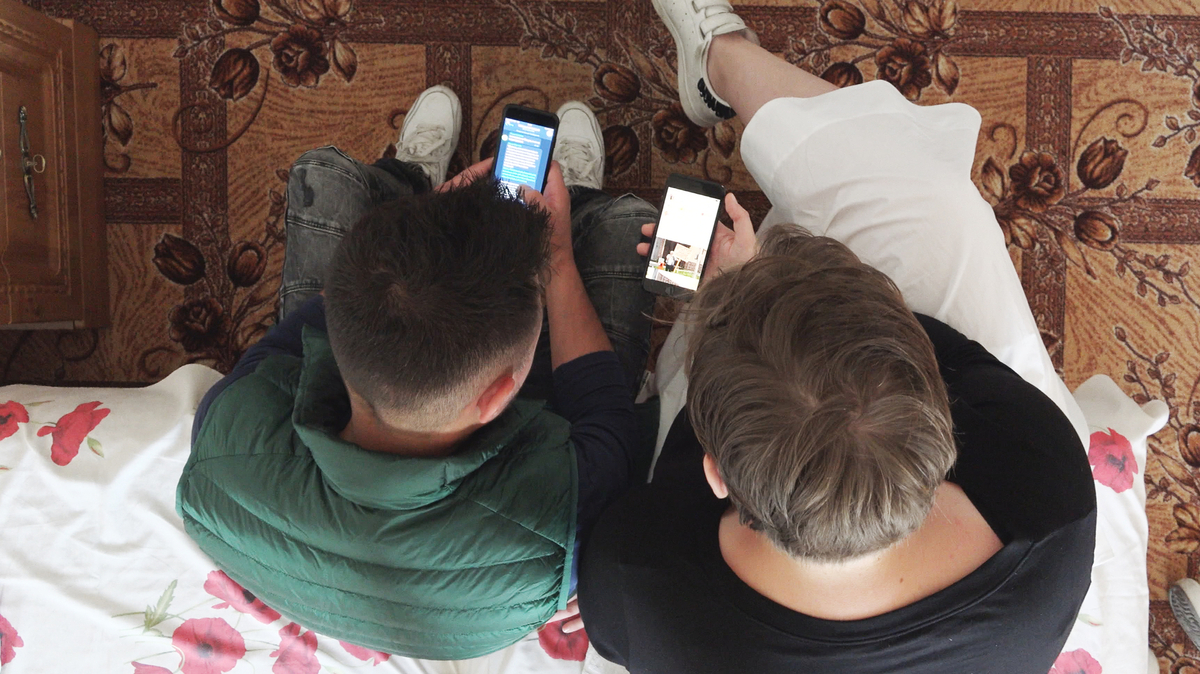
Welcome to Chechnya chronicles the persecution of LGBTQ youth in this ultra-conservative society. HBO Max hide caption
toggle caption
HBO Max

Welcome to Chechnya chronicles the persecution of LGBTQ youth in this ultra-conservative society.
HBO Max
Welcome to Chechnya is a grimly ironic title for a documentary that plays like a chilling undercover thriller. The camerawork is rough and ragged; the sense of menace is palpable.
The movie opens on a dark street in the southern Russian republic of Chechnya, where a man smokes a cigarette and arranges secret meetings and transports by phone. This is David Isteev, a crisis intervention coordinator for the Russian LGBT Network, and he spends his days helping gay and transgender Chechens flee a place where they are no longer safe.
Homosexuality and gender nonconformity have long been frowned upon in Chechen society. But things got much worse in early 2017, when the leader of the republic, Ramzan Kadyrov, a strongman with close ties to Russian President Vladimir Putin, began a violent purge of anyone suspected of being gay or transgender.
It began with a drug raid when police arrested a young man and found sexually explicit images of men on his phone. He was tortured and forced to name those men, who were then also arrested, tortured and forced to name others, setting off a horrific chain reaction. Some of the men were released — with the expectation that their own relatives would kill them, since the stigma of homosexuality runs deep in this ultra-conservative, primarily Muslim society.
The journalist and filmmaker David France was first alerted to this crisis by Masha Gessen’s 2017 New Yorker article and decided to make it the subject of his next film. He embedded himself with Isteev and another activist, Olga Baranova, and began filming some of the young people who turned to them for help. For security reasons, these individuals are introduced with aliases, and their circumstances and whereabouts are left deliberately vague.
But as the movie tells us upfront, France took an extraordinary step to protect their identities further, using sophisticated facial-disguise technology. Many of the faces we see are actually the faces of people from outside Chechnya, who lent their likenesses to the film.
It’s a bold gambit that may put off those who find it too duplicitous in the context of a documentary. But I found it remarkably effective in the way it lets these young men and women tell their stories and express a level of emotion that would have been lost if they had been filmed with blurred faces or in heavy shadows. Giving them different faces also makes a kind of poetic sense: It’s a reminder that to be LGBTQ in a repressive society is to never feel comfortable in your own skin.
One of these digitally altered subjects is a 21-year-old lesbian introduced as “Anya,” whose uncle knows her sexual orientation and demands that she sleep with him or risk being outed to her father, a powerful Chechen official. Anya decides to escape, but that isn’t so easy with the authorities soon hot on her trail. The Russian LGBT Network moves her into an apartment where she must hole up for weeks on end, waiting for a travel visa that might never arrive.
Similarly harrowing, but also more hopeful, is the experience of a 30-year-old Russian businessman, here called “Grisha,” who was detained and beaten for 12 days during a trip to Chechnya. The Network helps him move to an undisclosed location in Europe with his boyfriend of 10 years. Fortunately, the brave Grisha has the support of his immediate family, who decide to move with him; as his mother notes in one poignant scene, her loyalty is to her family — not to an oppressive government.
Welcome to Chechnya pays important tribute to the courage of its subjects, including activists like Isteev and Baranova, who risk their own persecution and exposure. The mere presence of France’s camera might endanger their lives and their work, but it’s also crucial to drawing international attention to the Chechen government’s abuses. We see some of those abuses in the movie’s most disturbing footage, much of it secretly filmed on cell phones and spliced into the film in brief jolts.
In one video, an incarcerated man is sexually assaulted off-camera by police. In another, a woman is attacked by a relative who — it’s implied but not shown — proceeds to bludgeon her to death. These are ghastly images, and I’m not convinced the film needed all of them to convey the full horror of what’s going on. But there’s no doubting the depth of its fury and anguish on behalf of the victims and survivors we see — and the many, many more that we don’t.



